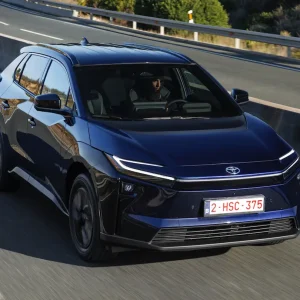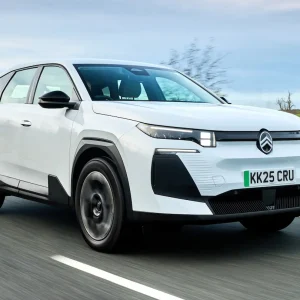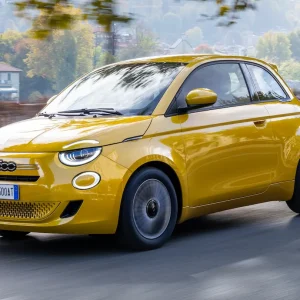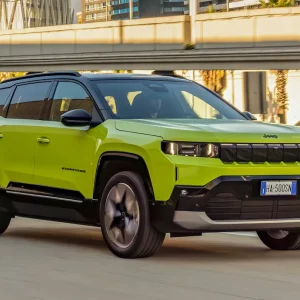The current, second-generation Volvo XC90 was launched back in 2015, but remains a favourite of ours. The design has aged well, and despite last year’s reveal of the all-new electric-powered, EX90 flagship, we’ve been told the XC90 will receive further updates and be sold alongside the new model after it launches. We’ve got the latest version of the T8 plug-in hybrid, which includes a bigger 18.8 kWh battery pack, replacing the previous 11.6kWh unit, and the Google Android-based infotainment system that has previously been rolled out to the rest of the Volvo range.
That new battery pack is combined with a 107kW electric motor and the XC90’s 2.0-litre, four-cylinder petrol engine, equalling an electric-only range of 42 miles (up from 27 miles), although like other plug-in hybrids, we found it was better to make use of this extra range in ‘Hybrid’ mode. On one 100 mile+ drive it roughly worked out as an extra 30 miles each way – equalling 42mpg. This is because, rather cleverly, the hybrid system looks at the navigation data to work out where best to use the battery’s range.
Although the battery was down to single figures at the end of the trip, and we were unable to charge this Volvo for the trip home, meaning it was engine-only, which equalled a less impressive early 30s mpg. However, even with a depleted battery, the regenerative braking meant we were still engine-less around town.
When you need to plug in, the T8 will now accept a 6.4kW charging rate, rather than the previous 3.7kW. This means a full charge will take up to five hours either by wall box or public charging point. Then there are the running costs to consider. Despite a total of 455hp, the T8 has an official CO2 figure of up to 34g/km, and the 42-mile electric range means it falls into the 8% BIK rate. Yet, with 455hp and 400Nm and 0-60mph acceleration in just over five seconds, this XC90 felt quick rather than ballistically fast. Starting off with electric power, we fFound the addition of the petrol engine didn’t go very smoothly under heavy acceleration for example. On the road, think composed and refined rather than sporty. Even the standard 20in wheels don’t seem to upset the ride too badly, although it’s opposite around town.
The interior might feel a bit dated now, the vertical screen for example looked massive at launch, but now looks quite small when compared to the latest horizontal units. It is still an attractive design, feels well-made and equipped, spacious and there’s the practicality of the extra pair of seats in the boot. Although, if those seats aren’t needed, this expands the boot to a vast 1,007 litres – more than enough room for a week’s holiday for a family of four and dog, we found. The most significant interior change is the introduction of the Google-based infotainment system. We particularly like the Google Maps-based navigation, along with Google Assistant voice control, which actually works very well picking up sat-nav destinations, and even cabin temperature changes. The downsides are, the system does feature small menu icons, which can be tricky to press when driving . The facelifted XC90 also gets a graphically updated 12.3in driver display – an attractive feature, although it does make the central screen redundant, as it shows the same navigation details.
Overall, despite the XC90’s age, the changes to the drivetrain and infotainment only add to its status as a strong contender – if you’re in the market for a premium seven-seat SUV, with plenty of safety kit, it still demands strong fleet consideration.
Volvo XC90 Recharge T8 Plus
P11D: £76,475
Residual value: 43.7%
Depreciation: £43,026
Fuel: £7,280
Service, maintenance and repair: £3,526
Cost per mile: 89.72p
Fuel consumption: 37.5mpg
CO2 (BIK %): 29-34g/km (8%)
BIK 20/40% a month: £101/£203
Luggage capacity: 316-356 litres
Engine size/power: 1,969cc + electric motor/455hp





